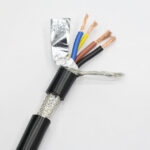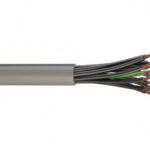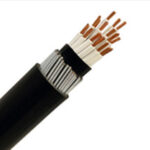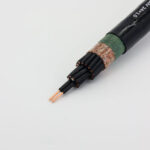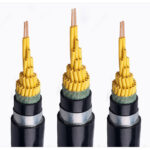Industry experts clarify wire sizing requirements as residential electrical service upgrades surge nationwide
March 20, 2025 - With American homes consuming more electricity than ever before, electrical service upgrades to 100-amp capacity have become increasingly common. Industry data shows a 45% increase in 100-amp service installations over the past two years, driven by electric vehicle adoption, home offices, and energy-efficient appliances. This surge has led to widespread confusion about proper wire sizing, prompting electrical safety organizations to provide clearer guidance on what size service wire for 100 amp service installations.
Growing Need for 100-Amp Service Drives Installation Boom
The transition from older 60-amp and 80-amp electrical services to modern 100-amp systems represents one of the most significant residential electrical upgrade trends in decades. This shift reflects the reality of contemporary home electrical demands, which have increased by an average of 30% since 2020.
'The most frequent question we get from homeowners planning electrical upgrades is 'what size service wire for 100 amp service,'' reports master electrician Jennifer Martinez with over 25 years of experience. 'Getting this sizing right is critical because the service entrance cable carries the full electrical load for the entire home.'
According to the National Association of Home Builders, new construction homes now average 100-amp service as standard, while existing homes built before 1980 often require complete service upgrades to meet modern electrical demands.

what size service wire for 100 amp service
Industry Standards Define Service Wire Requirements
Current National Electrical Code (NEC) standards specify clear requirements for 100-amp service wire sizing. The standard answer to what size service wire for 100 amp service is 4 AWG copper wire or 2 AWG aluminum wire for the hot conductors, with appropriate neutral and grounding conductors.
However, many electrical professionals recommend upgrading to 3 AWG copper or 1 AWG aluminum to provide better voltage regulation and accommodate future electrical load growth.
'When homeowners ask what size service wire for 100 amp service, we explain that 4 AWG copper meets code requirements, but 3 AWG copper provides better long-term performance,' explains electrical contractor David Chen. 'The relatively small cost difference often makes the upgrade worthwhile.'
Service Entrance Cable vs. Individual Conductors
Understanding what size service wire for 100 amp service requires distinguishing between different installation methods and cable types:
Service Entrance (SE) Cable:
- Pre-assembled cable with insulated conductors and bare neutral
- Typical configuration: 4 AWG copper conductors with 4 AWG neutral
- Easier installation but less flexible for custom applications
- Common sizes: 4-4-4 for copper, 2-2-2 for aluminum
Individual Conductors in Conduit:
- Separate THWN or XHHW conductors pulled through conduit
- Allows for custom sizing of neutral and grounding conductors
- More expensive but offers greater flexibility
- Professional installation typically required
'The choice between SE cable and individual conductors affects both cost and performance when determining what size service wire for 100 amp service,' notes electrical supply specialist Maria Rodriguez. 'SE cable is more economical for standard installations, while individual conductors allow for optimization.'
Copper vs. Aluminum: Material Considerations
The question of what size service wire for 100 amp service involves choosing between copper and aluminum conductors, each with distinct advantages and requirements:
Copper Service Wire Advantages:
- Higher conductivity allows smaller wire gauge (4 AWG vs. 2 AWG aluminum)
- Better corrosion resistance in most environments
- Easier termination and connection procedures
- Longer service life in typical installations
Aluminum Service Wire Benefits:
- Significantly lower material cost (40-50% less than copper)
- Lighter weight for easier installation
- Adequate performance when properly installed
- Standard choice for utility company connections
'Cost is often the deciding factor when homeowners research what size service wire for 100 amp service,' observes electrical contractor Robert Taylor. 'While copper performs better, aluminum can be an economical choice when installed by experienced professionals using proper techniques.'
Installation Distance and Voltage Drop Considerations
Determining what size service wire for 100 amp service becomes more complex when considering the distance between the utility connection and the main electrical panel. Longer service runs require larger wire gauges to maintain proper voltage levels.
Distance-Based Wire Sizing:
- Under 50 feet: Standard 4 AWG copper or 2 AWG aluminum typically adequate
- 50-100 feet: Consider upgrading to 3 AWG copper or 1 AWG aluminum
- Over 100 feet: May require 2 AWG copper or larger aluminum conductors
- Underground runs: Additional considerations for burial depth and protection
'Many homeowners don't realize that what size service wire for 100 amp service depends significantly on installation distance,' explains electrical engineer Dr. Patricia Williams. 'A service entrance located 75 feet from the meter might need larger wire than a standard installation to maintain proper voltage.'
Load Calculation and Future Planning
Professional electricians use sophisticated load calculations to determine appropriate service wire sizing that goes beyond the basic question of what size service wire for 100 amp service. These calculations consider both current and anticipated electrical loads.
Modern Home Electrical Loads:
- Base load: Lighting, outlets, small appliances (20-30 amps)
- Major appliances: Electric range, dryer, water heater (30-50 amps)
- HVAC systems: Central air conditioning, heat pumps (20-40 amps)
- Electric vehicle charging: Level 2 chargers (30-50 amps)
- Future expansion: Additional circuits and appliances
'When we calculate what size service wire for 100 amp service, we're really planning for the next 20-30 years of electrical use,' states certified load calculation specialist Dr. Michael Foster. 'Today's 80-amp actual load might become tomorrow's 95-amp load with the addition of an EV charger or heat pump.'
Regional Code Variations Affect Wire Selection
While national electrical codes provide baseline requirements, regional amendments can significantly impact the answer to what size service wire for 100 amp service installations.
Climate-Specific Requirements:
- Cold regions: Some northern states require larger neutral conductors for heating loads
- Hot climates: Temperature derating may require larger wire gauges
- Coastal areas: Corrosion considerations affect material selection
- High altitude: Reduced air density affects heat dissipation
Local Utility Requirements: Different utility companies have varying connection requirements that can influence service wire sizing decisions beyond basic electrical code compliance.
'What size service wire for 100 amp service can have different answers depending on your utility company and local climate conditions,' explains code consultant Angela Foster. 'We always verify local requirements before finalizing wire sizing specifications.'
Cost Analysis of Service Wire Options
The financial implications of different wire sizing choices extend beyond initial material costs to include installation labor, long-term performance, and potential future upgrade expenses.
Material Cost Comparison (per 100 feet):
- 4 AWG copper SE cable: $450-$550
- 3 AWG copper SE cable: $650-$750
- 2 AWG aluminum SE cable: $280-$380
- 1 AWG aluminum SE cable: $420-$520
Installation Factors:
- Labor costs: $1,200-$2,500 for complete service upgrade
- Permit fees: $150-$400 depending on jurisdiction
- Utility connection: $200-$800 for meter and service connection
- Panel upgrade: $800-$1,500 if required
'When homeowners ask about what size service wire for 100 amp service, we provide complete cost analysis including long-term benefits,' notes electrical contractor Lisa Park. 'Spending an extra $200 on larger wire often prevents expensive upgrades later.'
Safety Considerations for Service Entrance Work
Service entrance installations involve working with high-voltage, high-amperage electrical systems that pose significant safety risks. Understanding what size service wire for 100 amp service is important, but professional installation is essential for safety and code compliance.
Critical Safety Factors:
- Utility coordination: Power disconnection and reconnection procedures
- Proper grounding: Service grounding electrode systems
- Weatherhead installation: Protection from moisture and weather
- Panel integration: Proper connection to main electrical panel
- Inspection requirements: Local electrical inspector approval
The Electrical Safety Foundation International reports that service entrance work accounts for a disproportionate number of electrical injuries among non-professional installers, emphasizing the importance of professional installation.
'While homeowners should understand what size service wire for 100 amp service, the actual installation should always be performed by licensed professionals,' warns electrical safety advocate Dr. James Patterson. 'Service entrance work involves coordination with utility companies and presents serious safety hazards.'
Technology Integration and Smart Home Considerations
Modern 100-amp service installations increasingly incorporate smart technology and energy management systems that can influence wire sizing decisions beyond traditional load calculations.
Smart System Integration:
- Whole-home energy monitors: Real-time electrical usage tracking
- Smart main breakers: Remote monitoring and control capabilities
- Load management systems: Automatic load shedding during peak demand
- Solar integration: Preparation for future renewable energy systems
'Today's question about what size service wire for 100 amp service often includes planning for smart home integration,' observes home automation specialist Jennifer Davis. 'We're seeing requests for oversized neutral conductors to accommodate advanced monitoring systems.'
Environmental and Sustainability Factors
Growing environmental awareness influences many homeowners' decisions about service wire sizing and material selection when upgrading to 100-amp service.
Sustainability Considerations:
- Energy efficiency: Larger wire gauges reduce transmission losses
- Material recyclability: Copper has higher recycling value than aluminum
- Manufacturing impact: Different materials have varying production emissions
- Service life: Quality installations reduce replacement frequency
'Customers increasingly consider environmental impact when we discuss what size service wire for 100 amp service,' reports green building contractor Mark Anderson. 'The long-term energy savings from properly sized wire often align with sustainability goals.'
Common Service Upgrade Scenarios
Different home situations require tailored approaches to the question of what size service wire for 100 amp service, with specific considerations for various upgrade scenarios.
Typical Upgrade Situations:
- Older homes with 60-amp service: Complete panel and service replacement
- Homes with undersized 80-amp service: Service conductor upgrade may suffice
- New construction: Planning for current and future electrical needs
- Major renovations: Opportunity to upgrade electrical infrastructure
Special Considerations:
- Historic homes: Preserving architectural integrity while upgrading electrical
- Mobile homes: Specific requirements for manufactured housing
- Rural properties: Longer service runs and different utility requirements
- Multi-family properties: Commercial-grade requirements may apply
Industry Trends and Future Developments
The electrical industry is experiencing rapid changes that affect how professionals approach 100-amp service installations and wire sizing decisions.
Emerging Trends:
- Increased standard service size: Some regions moving toward 125-amp or 150-amp as standard
- DC integration: Preparation for direct-current home systems
- Energy storage systems: Battery backup integration requirements
- Electric vehicle infrastructure: Dedicated EV charging circuits
'The question of what size service wire for 100 amp service is evolving as electrical demands continue to grow,' predicts electrical industry analyst Dr. Sarah Kim. 'We're already seeing some jurisdictions require larger service sizes for new construction.'
Professional Installation Best Practices
Industry professionals have developed comprehensive standards for 100-amp service installations that ensure safety, code compliance, and optimal performance.
Installation Standards:
- Load analysis: Comprehensive electrical load calculations
- Material selection: Appropriate wire type and sizing for conditions
- Proper connections: Quality terminals and connection techniques
- Grounding systems: Complete service grounding electrode installation
- Weather protection: Proper sealing and weatherproofing
'Understanding what size service wire for 100 amp service is valuable knowledge for homeowners,' emphasizes master electrician Robert Chen. 'But professional installation ensures the complete system works safely and efficiently for decades.'
Return on Investment Analysis
Service upgrades to 100-amp capacity represent significant investments that provide both immediate benefits and long-term value improvements.
Financial Benefits:
- Increased home value: Modern electrical service adds property value
- Insurance advantages: Updated electrical systems may reduce premiums
- Energy efficiency: Proper wire sizing reduces electrical losses
- Future flexibility: Avoids costly upgrades for new appliances
- Safety improvements: Reduces fire and electrical hazard risks
'When we help homeowners understand what size service wire for 100 amp service, we also explain the investment returns,' notes residential appraiser David Foster. 'Quality electrical upgrades typically return 70-90% of their cost in increased property value.'
Maintenance and Long-Term Performance
Properly sized service wire for 100-amp installations requires minimal maintenance but benefits from periodic professional inspection and monitoring.
Maintenance Considerations:
- Annual inspections: Visual inspection of service entrance components
- Connection tightening: Thermal cycling can loosen connections over time
- Corrosion monitoring: Especially important for aluminum conductors
- Load monitoring: Tracking electrical usage to ensure adequate capacity
'The question of what size service wire for 100 amp service isn't just about initial installation,' explains electrical maintenance specialist Dr. Patricia Williams. 'Proper sizing ensures reliable performance throughout the system's 30-40 year service life.'
Consumer Education and Decision Making
As 100-amp service upgrades become more common, electrical industry organizations emphasize the importance of consumer education about proper wire sizing and professional installation requirements.
Key Educational Points:
- Understanding electrical load requirements: How to calculate home electrical needs
- Material selection factors: Copper vs. aluminum considerations
- Installation complexity: Why professional installation is essential
- Long-term planning: Considering future electrical needs
- Safety priorities: Recognizing electrical hazards and risks
'We want homeowners to understand what size service wire for 100 amp service, but more importantly, to make informed decisions about their electrical upgrades,' states electrical safety educator Maria Santos. 'Knowledge leads to better outcomes when working with electrical professionals.'
Conclusion: Professional Expertise Ensures Optimal Results
As residential electrical demands continue to grow, understanding proper service wire sizing becomes increasingly important for homeowners considering electrical upgrades. While the basic answer to what size service wire for 100 amp service is well-established in electrical codes, optimal installations require consideration of numerous factors including future electrical needs, installation conditions, and local requirements.
The electrical industry consensus emphasizes that knowledge about service wire sizing should inform better communication with electrical professionals rather than encourage DIY installation attempts. Service entrance work involves high-voltage electrical systems, utility coordination, and complex code requirements that require professional expertise.
'The question 'what size service wire for 100 amp service' will remain important as more homes upgrade their electrical systems,' concludes electrical industry expert Dr. Jennifer Williams. 'But the complete answer involves understanding not just wire sizing, but the entire electrical system design needed for safe, efficient, and future-ready electrical service.'
For homeowners planning 100-amp service upgrades, success depends on working with qualified electrical professionals who understand both current code requirements and evolving electrical demands. Proper service wire sizing is just one component of a comprehensive electrical upgrade that provides decades of safe, reliable power for modern homes.

